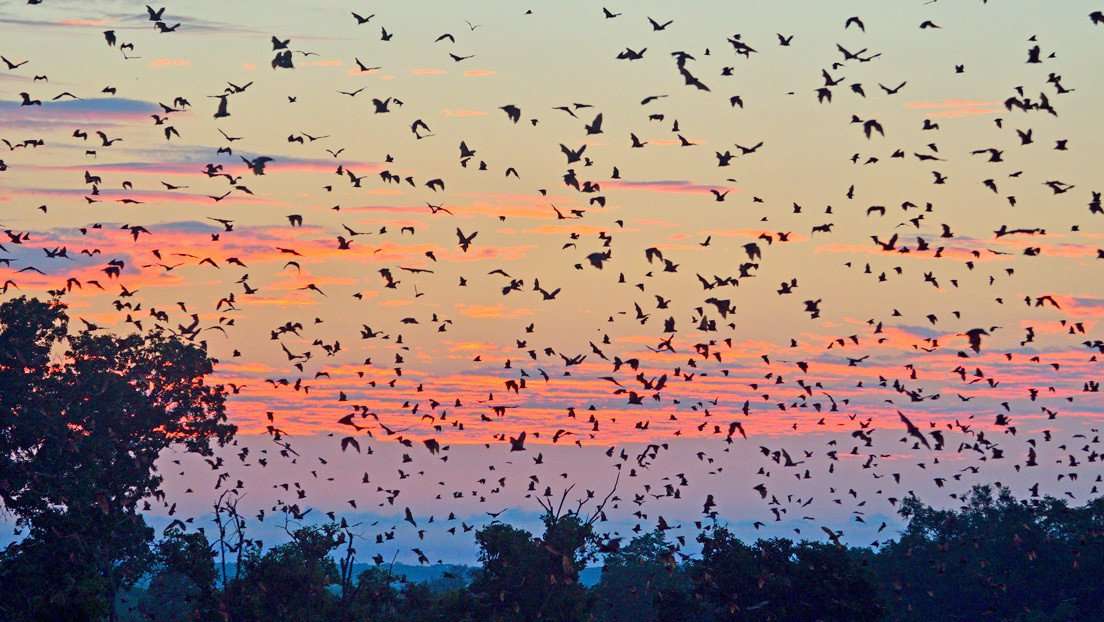In a new study, artificial intelligence (AI) has provided the most accurate estimate yet of the bat population in Kasanka National Park, Zambia, recording the presence of between 750,000 and 1 million bats – the largest colony by biomass anywhere in the world.
The importance of counting this “keystone” species
Kasanka National Park in Zambia, Africa plays host to one of the world’s most spectacular natural phenomena each November. Straw-colored fruit bats from all over the continent migrate annually to roost in trees in a small area of the park, amassing the largest population of bats in Africa.
The animals travel up to 2,000 kilometers each year, the most extreme long-distance migration of any flying fox. They are incredibly important for the environment and have earned the title of “keystone” species, meaning they are essential for the surrounding ecosystem. The bats disperse seeds during their long migration, helping to reforest degraded land.
However, despite their stunning migratory display and their ecological importance, the exact number of bats in this colony is unknown – previous estimates have suggested it could be formed of anywhere from 1 to 10 million individuals.
Manual counting has led to wildly fluctuating numbers – now, a team of researchers is using AI to pioneer an automated approach for quantifying the animals.
“We’ve shown that cheap cameras, combined with AI, can be used to monitor large animal populations in ways that would otherwise be impossible,” said Dr. Ben Koger, lead author of the study and an expert in using automated approaches for ecological datasets. “This approach will change what we know about the natural world and how we work to maintain it in the face of rapid human development and climate change.”
Combining action cameras and software algorithms
Dr. Dina Dechmann, a group leader at the Max Planck Institute of Animal Behavior, has studied these straw-colored fruit bats for over a decade and has raised concerns about possible declines in numbers over her career. She set out to devise a tool to count the bats that is both reproducible and comparable across time, which would enable researchers to tell if the population was indeed declining.
“Straw-colored fruit bats are the secret gardeners of Africa,” said Dechmann. “They connect the continent in ways that no other seed disperser does. A loss of the species would be devastating for the ecosystem. So, if the population is decreasing at all, we urgently need to know.”
Dechmann formed a collaboration with Koger, along with researchers from North Carolina State University and Southeastern Louisiana University, as well as the Kasanka Trust, the organization in charge of management and conservation in Kasanka National Park. They devised a plan to use AI to improve the accuracy and efficiency of quantifying complex bat populations.
Their method consisted of two main steps – firstly, they set up nine GoPro cameras to record the bats leaving the colony at dusk. Secondly, Koger devised deep-learning models to detect and count the bats from the video recordings. The researchers validated the automated results by manually counting bats in the same clips, finding that the AI was 95% accurate and even worked in dark conditions.
“Using more sophisticated technology to monitor a colony as giant as Kasanka’s could be prohibitively expensive because you’d need so much equipment,” said Koger. “But we could show that cheap cameras paired with our custom software algorithms did very well at detecting and counting bats at our study site. This is hugely important for monitoring the site in the future.”
Over five nights, the AI method recorded an average of 750,000–1,000,000 bats each night, well below previous estimates. The authors explain that this may be low as they may not have caught the peak of the migration period, meaning some animals may have arrived later. Nevertheless, these estimates still place this colony as one of the largest congregations of bats in the world.
“This is a game-changer for counting and conserving large populations of animals,” said Dechmann. “Now, we have an efficient and reproducible way of monitoring animals over time. If we use this same method to census animals every year, we can actually say if the population is going up or down.”
Stressing the need for accurate population monitoring in the face of threats such as agriculture, Dechmann says the issue has never been so urgent: “It’s easy to assume that losing a few animals here and there from large populations won’t make a dent. But if we are to maintain the ecosystem services provided by these animals, we need to maintain their populations at meaningful levels. The Kasanka colony isn’t just one of many; it’s a sink colony of bats from across the subcontinent. Losing this colony would be devastating for Africa as a whole.”
Reference: Koger B, Hurme E, Costelloe BR, et al. An automated approach for counting groups of flying animals applied to one of the world’s largest bat colonies. Ecosphere. 2023;14(6):e4590. doi: 10.1002/ecs2.4590
Source : https://www.technologynetworks.com/tn/news/ai-provides-most-accurate-estimate-of-africas-largest-bat-colony-population-376145







